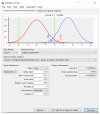The Determinants of Mental Health Literacy among Young Adolescents in Malaysia
- PMID: 35328930
- PMCID: PMC8953899
- DOI: 10.3390/ijerph19063242
The Determinants of Mental Health Literacy among Young Adolescents in Malaysia
Abstract
Mental health literacy (MHL) is an established multifaceted concept that comprises mental health knowledge, help-seeking, and stigma. Adequate MHL (i.e., the ability to correctly recognize mental health disorders alongside having the intention to seek help) is able improve mental health outcomes among individuals. This study aims to examine the determinants of MHL among young Malaysian adolescents. A cross-sectional study was conducted among 1400 adolescents between 13 and 14 years old from nine national secondary schools in Selangor state, Malaysia. Sociodemographic determinants assessed included gender, age, ethnicity, smoking status, alcohol consumption, history of being bullied, feeling lonely, parental marital status, and parental income which were assessed using the Global School Based Student Health Survey. MHL was assessed using the Mental Health Literacy and Stigma questionnaire. Several factors were significantly associated with adequate levels of MHL following multivariate analysis, such as being female (AOR = 1.68; 95% CI 1.12, 2.52), older adolescents (AOR = 1.56; 95% CI 1.07, 2.30), not smoking (AOR = 1.99; 95% CI 1.20, 4.26), not consuming alcohol (AOR = 1.23; 95% CI 1.18, 2.41), and not feeling lonely (AOR = 1.25; 95% CI 1.06, 1.85). Addressing these determinants could be key in assisting the development of policies and programs to prevent mental health disorders among adolescents, which are currently on the rise.
Keywords: adolescents; mental health disorders; mental health literacy.
Conflict of interest statement
The authors declare no conflict of interest.
Similar articles
-
Prevalence and Determinants of Depressive Symptoms among Young Adolescents in Malaysia: A Cross-Sectional Study.Children (Basel). 2023 Jan 11;10(1):141. doi: 10.3390/children10010141. Children (Basel). 2023. PMID: 36670691 Free PMC article.
-
Predictors of Mental Health Literacy among Parents, Guardians, and Teachers of Adolescents in West Malaysia.Int J Environ Res Public Health. 2023 Jan 1;20(1):825. doi: 10.3390/ijerph20010825. Int J Environ Res Public Health. 2023. PMID: 36613147 Free PMC article.
-
An exploratory cross-sectional study on Mental health literacy of Spanish adolescents.BMC Public Health. 2024 May 31;24(1):1469. doi: 10.1186/s12889-024-18933-9. BMC Public Health. 2024. PMID: 38822283 Free PMC article.
-
Mental Health Literacy Interventions in Young People: a Narrative Review.Psychiatr Danub. 2024 Sep;36(Suppl 2):385-388. Psychiatr Danub. 2024. PMID: 39378501 Review.
-
Promotion of Mental Health Literacy in Adolescents: A Scoping Review.Int J Environ Res Public Health. 2021 Sep 9;18(18):9500. doi: 10.3390/ijerph18189500. Int J Environ Res Public Health. 2021. PMID: 34574427 Free PMC article.
Cited by
-
Mental Health Literacy Among Urban and Rural Residents of Guangdong Province, China.Risk Manag Healthc Policy. 2024 Sep 30;17:2305-2318. doi: 10.2147/RMHP.S479868. eCollection 2024. Risk Manag Healthc Policy. 2024. PMID: 39371938 Free PMC article.
-
Modifiable predictors of mental health literacy in the educational context: a systematic review and meta-analysis.BMC Psychol. 2024 Jul 4;12(1):378. doi: 10.1186/s40359-024-01878-4. BMC Psychol. 2024. PMID: 38965633 Free PMC article.
-
Types and effectiveness of mental health promotion programmes for young people in sub-Saharan Africa: A systematic review.Glob Ment Health (Camb). 2025 Jan 9;12:e27. doi: 10.1017/gmh.2024.153. eCollection 2025. Glob Ment Health (Camb). 2025. PMID: 40160385 Free PMC article. Review.
-
COVID-19 in Brazil: Are there any differences in Mental Health Literacy between young and aged men?Rev Lat Am Enfermagem. 2022 Jul 15;30:e3603. doi: 10.1590/1518-8345.5651.3603. eCollection 2022. Rev Lat Am Enfermagem. 2022. PMID: 35858006 Free PMC article.
-
Exploring mental health literacy among prospective university students using GIS techniques in Bangladesh: an exploratory study.Glob Ment Health (Camb). 2024 Oct 23;11:e92. doi: 10.1017/gmh.2024.115. eCollection 2024. Glob Ment Health (Camb). 2024. PMID: 39464570 Free PMC article.
References
-
- Jorm A.F., Korten A.E., Jacomb P.A., Christensen H., Rodgers B., Politt P. Mental health literacy: A survey of the public’s ability to recognize mental disorders and their beliefs about the effectiveness of treatment. Med. J. Aust. 1997;166:182–186. doi: 10.5694/j.1326-5377.1997.tb140071.x. - DOI - PubMed
MeSH terms
LinkOut - more resources
Full Text Sources
Medical


